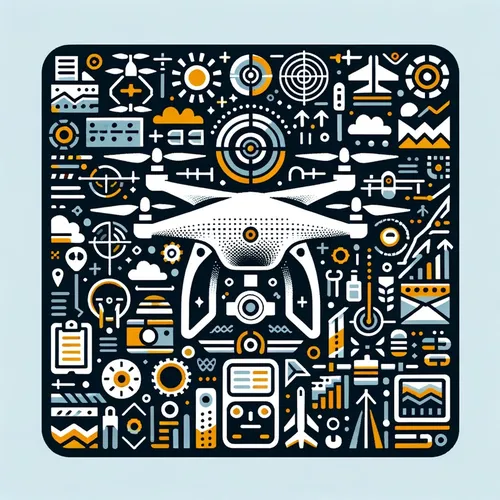Drones Gone Wild: AI, Amazon, and Airspace Drama in 2025!
- Author
- Quiet. Please
- Published
- Sat 06 Sep 2025
- Episode Link
- https://www.spreaker.com/episode/drones-gone-wild-ai-amazon-and-airspace-drama-in-2025--67652575
This is you Professional Drone Pilot: Flight Tips & Industry Updates podcast.
For commercial drone pilots, aerial photographers, and inspection specialists, today’s fast-moving landscape demands continuous upskilling and market awareness. The latest advancements show that artificial intelligence is fundamentally reshaping professional drone operations—AI-enhanced flight autonomy and obstacle avoidance are enabling inspection specialists to cover more ground safely and efficiently. For high-end aerial work, investing in drones equipped with LiDAR or multispectral sensors is becoming standard for precise mapping and agricultural analytics. Manufacturers like DJI and Autel have released new enterprise-grade models in 2025 that promise longer flight times and improved wind resistance, critical for maintaining quality under shifting conditions.
Routine equipment maintenance remains crucial; pilots should conduct pre-flight inspections focusing on rotor integrity, battery health, and firmware updates. Optimizing battery life means adopting best practices: avoid full discharges, store batteries at mid-charge, and calibrate sensors monthly. For business operations, the global drone services market is on track to hit 64 billion dollars by 2030, according to recent industry projections. Construction, energy, agriculture, and real estate remain the dominant sectors for opportunities, with specialized services like infrastructure inspection and precision agriculture commanding premium rates. The rapid rise of drone light shows and efficient package delivery—highlighted by recent news of Amazon and Walmart expanding their urban drone fleets—signals emerging markets for experienced operators.
On the regulatory side, the Federal Aviation Administration continues to require Part 107 certification and biennial recurrent training. For those flying in Canada or Europe, 2025 has seen small fee hikes and more emphasis on registered drones and operator competence. Make sure to track new airspace restrictions and remote ID requirements, which are increasingly enforced as drones proliferate in urban and industrial zones.
Client relationship management is also evolving. Offering integrated services—360-degree tours, real-time data analytics, or bundled editing—gives you a distinct edge. Transparent pricing, detailed pre-flight planning, and client education about project timelines and deliverables foster trust and drive retention. Given the uptick in UAV-related claims, review your insurance to ensure it matches the full spectrum of your operations, from equipment loss to third-party liability, as underwriters now scrutinize pilot logs and safety records.
Looking at weather and flight planning, leverage improved forecasting apps that now incorporate real-time hyperlocal wind and precipitation data—critical as climate shifts continue to affect flight safety. Before every mission, cross-reference conditions and local restrictions for the time, altitude, and location of your flights.
Practical takeaways include mastering advanced automation features, maintaining detailed maintenance logs, upselling data analytics to clients, and refreshing your certification as regulations evolve. Prepare for a future where urban air mobility and AI-driven analytics fuel more complex, higher-value contracts. Thanks for tuning in to this essential update for drone professionals; be sure to join us next week for more insights. This has been a Quiet Please production, and for more on this and other topics, check out Quiet Please Dot A I.
For more http://www.quietplease.ai
Get the best deals https://amzn.to/3ODvOta
